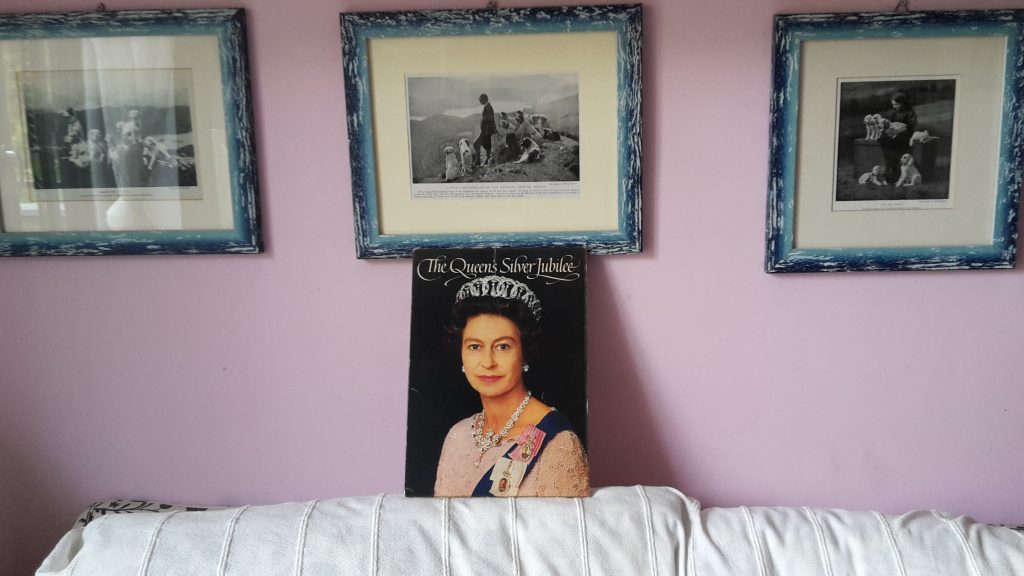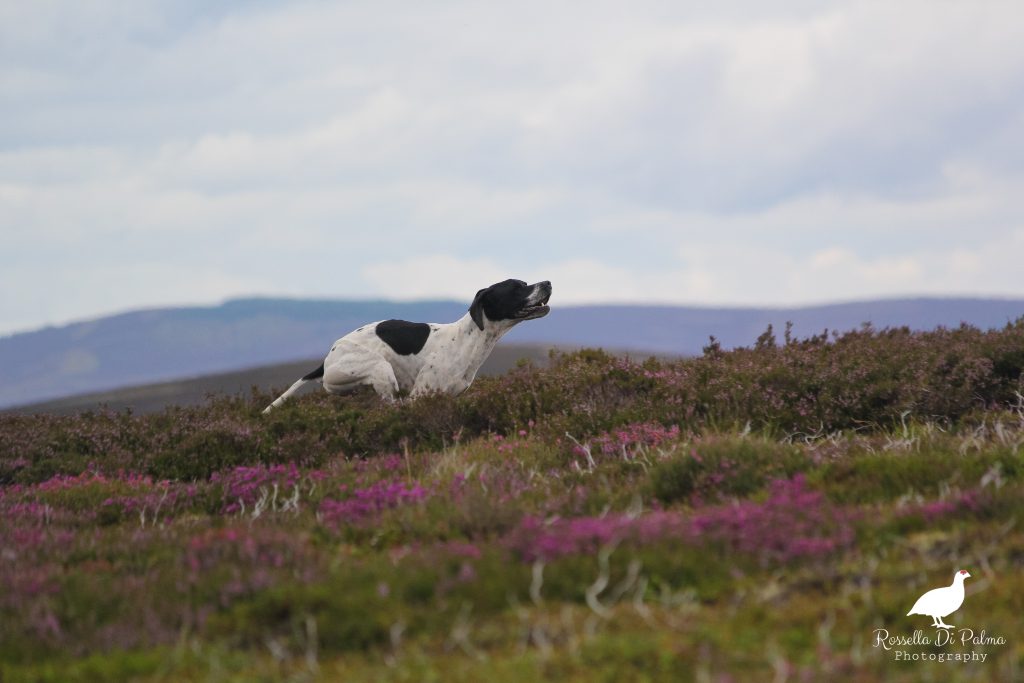L’anello mancante: il moor
Attenzione, questo è un articolo criceto.
Che diavolo è un articolo criceto? È uno di quegli articoli che inizia a correre nella testa dell’autore come fanno i criceti sulle loro ruote. Gli articoli criceto vogliono essere raccontati e diventano impazienti quando gli tocca aspettare. Il mio criceto corre da un mese, è giunto il momento di accontentarlo. La creaturina vuole che scriva sull’anello mancante, e cioè sul moor. Quelli che mi conoscono personalmente, o che sono da tempo in contatto con me, sanno che sono un po’ strana e che convivo tranquillamente con le mie peculiarità. Però, a volte, mi sento fuori posto, come se mancasse qualcosa.
Parlando di setter inglesi, razza nei confronti della quale provo una grande devozione, mancava un pezzo del puzzle e ci sono voluti 16 anni dal mio primo setter per trovarlo. Gli adulti strani, in maggioranza, sono stati bambini strani, non faccio eccezione. Quando ancora gattonavo, non ne volevo sapere di bere latte, il mio biberon era pieno di té, per forza che poi non dormivo. A quattro anni, le maestre d’asilo hanno chiamato a colloquio i miei genitori. Erano preoccupate perché usavo troppo viola nei disegni. I miei genitori non seppero fornire una spiegazione e nemmeno io so darla, del resto sono nota al colorificio locale per essere quella che ordina un violetto erica/malva da mettere sulle pareti! A cinque anni, a colazione, mangiavo pancakes e tè, i bambini normali caffè latte con biscotti. Nello stesso periodo mi fu regalato un libro sui 25 anni di regno della Regina Elisabetta, ce l’ho ancora, gelosamente conservato nella mia biblioteca. L’anno successivo ho chiesto di essere iscritta a un corso extra di lingua inglese e, grazie al mio libro di testo, ho appreso chele case britanniche messe in vendita avevano ragni giganti nelle vasche da bagno. E, infine, a dieci anni, ero assolutamente convinta di aver “bisogno” di un setter inglese da lavoro. I miei genitori la pensavano diversamente.

Anni dopo ne ho finalmente avuto uno, ho iniziato a portarlo a caccia e a partecipare come spettatrice alle prove di lavoro. Qualcosa, tuttavia, mancava. Mi divertivo in campagna e continuavo a cercare di informarmi, leggevo, chiedevo, seguivo giudici e cacciatore più esperti ma qualcosa che non riuscivo a definire continuava a mancare. L’unica cosa che riuscivo a capire è che amavo alcuni terreni più di altri. Potrei menzionare Villa Alta a Ruino; Costa del Vento o Costa Pelata a Montalto – tutte in Appennino e tutte, ironicamente, – l’avrei scoperto dopo – abbastanza somiglianti ad un moor. Altri posti mi suonavano insignificanti. Gli italiani dicono che le razze inglesi hanno bisogno di spazio e giustificano gli estremi della Grande Cerca asserendo che queste razze sono nate per cacciare sui moors. I miei connazionali trovano perfettamente normale che un setter salti da una valle all’altra (e sia monitorato nell’impresa con un GPS) perché, dopotutto, è nato per il moor. I pointer possono spaziare anche di più, due o tre valli sono il numero ideale. Non h mai creduto del tutto a questa teoria, ma ho tenuto questa convinzione per me. Forse avevano ragione ma mi sembrava si cercasse di infilare un piede nella scarpa sbagliata.

Dopo tutto i setter lanciati in ampie distese pianeggianti, nei boschi o tra i roveti se la cavano piuttosto bene, la razza è sicuramente versatile e adattabile. Il mio istinto, tuttavia, continuava a dirmi che qualcosa era fuori posto. Nei miei libri e sulle mie pareti c’erano vecchie fotografie di cani sul moor ma erano in bianco e nero, non riuscivo a comprendere i colori. Nel 2008 ho acquistato alcune britanniche: il moor risplendeva in violetto! Non era solo l’erica, il cielo e la luce erano in differenti gradazioni del viola, tutta l’atmosfera era violetto! Era magico, incredibile, credevo avessero ritoccato i colori con Photoshop, a volte riesco ad essere abbastanza ingenua!
Nel 2015 sono andata su un moor per la prima volta, e tutto era incredibilmente famigliare e “normale”. I cani in corsa sul moor si inserivano perfettamente nel contesto: grouse, erica e cieli color lavanda sembravano fatti su misura per loro. Non appena ho lasciato il moor, ho iniziato a sentirne la mancanza. Sentivo di dover tornare, viverlo, capirlo. Un anno dopo, gli stessi cieli color lavanda mi guardavano dall’alto, io rispondevo con un sorriso. Ho passato un mese tra l’erica, tra le grouse, tra I cani da ferma e tutto è andato a posto: iI setter apparteneva al moor, o viceversa; le grouse gli si addicevano perfettamente e l’erica li aiutava nel lavoro, anche il tempo era splendido! Beh, il tempo sui moors è di rado splendido se lo si valuta con parametri da umani ma… se immaginate di essere un cane, il tempo è perfetto! È freddo abbastanza, ventoso abbastanza, umido abbastanza. Ero talmente abituata ad essere spazzata via dal vento da sentirne la mancanza. Ero (e resto) talmente innamorata del moor che ho condiviso subito con entusiasmo le fotografie con amici italiani. Alcune loro reazioni mi hanno sorpreso. Un amico, in particolare, si è accorto che mancavano gli alberi, li trovava luoghi molto spogli. In effetti non mi ero mai accorta che mancassero gli alberi e questo, probabilmente, è accaduto perché non li considero affatto spogli. Al contrario, sono pieni di doni, bisogna solo essere sensibili abbastanza per accorgersene. Non mi servono i boschi per dare la caccia alla beccaccia, non mi strega. So che è il selvatico preferito dai setteristi italiani e la trovo un animale affascinante ma non posso affermare di amarla. La grouse è diversa ed è una grande maestra, severa e paziente allo stesso tempo, probabilmente uno dei migliori selvatici su cui preparare i cani da ferma. Inoltre non considero i boschi un terreno ideale per il setter inglese: alberi e foglie nascondono il lavoro del cane, l’erica invece, nasconde le grouse ma lascia il cane sul palcoscenico.

Il moor è uno spazio sacro in in cui solo i cani ben educati sono ammessi: sul moor si addestra, si compete in prove di lavoro, si va a caccia. Per ora ho vissuto solo le prime due attività e continuerò a scriverci su, quello che posso dire, in breve è che i field trials sono differenti dalle nostre prove di lavoro. Non sono qui per affermare che siano migliori o peggiori, non riesco nemmeno a spiegare bene come le consideri, riesco solo a dire che, nella loro diversità, le trovo normalissime e… mi hanno persino dato ragione! Moor, grouse & trials insegnano ai cani di allargare, ma mi allargare “il giusto”, che è diverso dall’ “allargare follemente”. I terreni aperti sono tentatori, ma un cane intelligente e addestrato all’inglese aprirà quanto gli potrebbe essere consentito in una tradizionale – GPS free – giornata di caccia. Essendo stata la caccia la prima attività intrapresa con il cane da ferma, non posso che concordare. Forse un giorno parteciperò a una giornata di caccia alla grouse e così saranno messi i tocchi finali al quadro: setter inglesi, erica viola, profumo di polvere da sparo e cieli color lavanda.